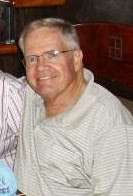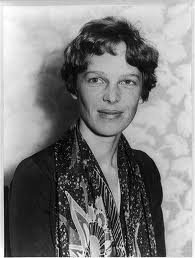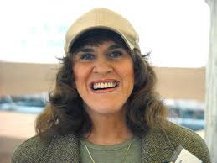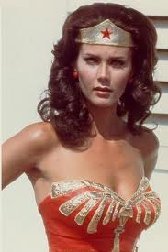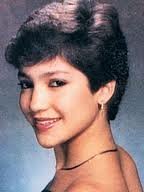
The earliest road signs were milestones, giving distance or direction; for example, the Romans erected stone columns throughout their empire giving the distance to Rome. According to Strabo, Mauryas erected signboards at distance of 10 stades to mark their roads. In the Middle Ages, multi-directional signs at intersections became common, giving directions to cities and towns.
In 1686, the first known Traffic Regulation Act in Europe is established by King Peter II of Portugal. This act foresees the placement of priority signs in the narrowest streets of Lisbon, stating which traffic should back up to give way. One of these signs still exists at Salvador street, in the neighborhood of Alfama.
The first modern road signs erected on a wide scale were designed for riders of high or "ordinary" bicycles in the late 1870s and early 1880s. These machines were fast, silent and their nature made them difficult to control, moreover their riders traveled considerable distances and often preferred to tour on unfamiliar roads. For such riders, cycling organizations began to erect signs that warned of potential hazards ahead (particularly steep hills), rather than merely giving distance or directions to places, thereby contributing the sign type that defines "modern" traffic signs.
The development of automobiles encouraged more complex signage systems using more than just text-based notices. One of the first modern-day road sign systems was devised by the Italian Touring Club in 1895. By 1900, a Congress of the International League of Touring Organizations in Paris was considering proposals for standardization of road signage. In 1903 the British government introduced four "national" signs based on shape, but the basic patterns of most traffic signs were set at the 1908 International Road Congress in Paris. In 1909, nine European governments agreed on the use of four pictorial symbols, indicating "bump", "curve", "intersection", and "grade-level railroad crossing". The intensive work on international road signs that took place between 1926 and 1949 eventually led to the development of the European road sign system. Both Britain and the United States developed their own road signage systems, both of which were adopted or modified by many other nations in their respective spheres of influence. The UK adopted a version of the European road signs in 1964 and, over past decades, North American signage began using some symbols and graphics mixed in with English.
In the U.S., the first road signs were erected by the American Automobile Association (AAA). Starting in 1906, regional AAA clubs began paying for and installing wooden signs to help motorists find their way. In 1914, AAA started a cohesive transcontinental signage project, installing more than 4,000 signs in one stretch between Los Angeles and Kansas City alone.
Over the years, change was gradual. Pre-industrial signs were stone or wood, but with the development of Darby's method of smelting iron using coke-painted cast iron became favored in the late 18th and 19th centuries. Cast iron continued to be used until the mid-20th century, but it was gradually displaced by aluminium or other materials and processes, such as vitreous enameled and/or pressed malleable iron, or (later) steel. Since 1945 most signs have been made from sheet aluminium with adhesive plastic coatings; these are normally retroreflective for nighttime and low-light visibility. Before the development of reflective plastics, reflectivity was provided by glass reflectors set into the lettering and symbols.
New generations of traffic signs based on electronic displays can also change their text (or, in some countries, symbols) to provide for "intelligent control" linked to automated traffic sensors or remote manual input. In over 20 countries, real-time Traffic Message Channel incident warnings are conveyed directly to vehicle navigation systems using inaudible signals carried via FM radio, 3G cellular data and satellite broadcasts. Finally, cars can pay tolls and trucks pass safety screening checks using video numberplate scanning, or RFID transponders in windshields linked to antennae over the road, in support of on-board signalling, toll collection, and travel time monitoring.
Yet another "medium" for transferring information ordinarily associated with visible signs is RIAS (Remote Infrared Audible Signage), e.g., "talking signs" for print-handicapped (including blind/low-vision/illiterate) people. These are infra-red transmitters serving the same purpose as the usual graphic signs when received by an appropriate device such as a hand-held receiver or one built into a cell phone.
Then, finally, in 1914, the world's first electric traffic signal is put into place on the corner of Euclid Avenue and East 105th Street in Cleveland, Ohio, on August 5.
Our Cobb Macaroni Salad is a cross between a creamy macaroni salad and a fill-ya-up Cobb salad. Not only is this macaroni salad recipe easy to follow, but it's sure to be one of the top deli salads at your next summertime cookout, backyard bash, or family get-together. We especially love that this one is hearty enough to be a meal in itself!
- 8 ounces elbow macaroni
- 1 cup diced ham
- 1 cup diced cheddar cheese
- 1 red bell pepper, cut into 1/2-inch chunks
- 1 stalk celery, sliced
- 1 avocado, pitted and cut into chunks
- 4 slices bacon, crispy cooked and crumbled, divided
- 1 cup mayonnaise
- 2 tablespoons white vinegar
- 1 tablespoon sugar
- 1 teaspoon salt
- 1/2 teaspoon black pepper
- 2 hard-boiled eggs, quartered
- In a medium pot of boiling salted water, cook pasta to desired doneness; drain well and let cool.
- In a large bowl, combine pasta, ham, cheese, bell pepper, celery, avocado, and half the bacon; mix well.
- In a small bowl, combine mayonnaise, vinegar, sugar, salt, and pepper; blend well. Pour mayonnaise mixture over pasta mixture; toss until evenly coated. Sprinkle with remaining bacon, garnish with eggs, and serve, or refrigerate until ready to serve.
1899 – Chief Dan George, Canadian actor (d. 1981)
1936 – Ruth Buzzi, American actress and comedian
1951 – Lynda Carter, American actress
1969 – Jennifer Lopez, American actress and singer
On July 24th, commemorate National Tequila Day with a little lime and salt. Mix up a Margarita, Paloma, or a Mamasita to celebrate the day! People have been making Tequila for centuries, and it was once known as mezcal wine.
In fact, Tequila is mezcal, but mezcal isn’t Tequila. That’s because Tequila is distilled from a specific type of agave plant. Also, the law protects its production. Take a sip, and we’ll travel into Tequila’s history.
Tequila History
It all started around the 16th century. Cortez arrived on the North American continent with his Spanish conquistadors. They didn’t care much for the fermented mezcal wine served to them. However, the Spanish introduced copper stills to the population. Enter the distilling process.
Now, our story takes us to Tequila, Jalisco, Mexico. Located in a valley west of Guadalajara in Jalisco, Mexico, the town made a name for themselves by distilling Blue Agave. Even though a variety of succulents in Mexico produce mezcal, only one delivers the nectar to distill Tequila. Blue Agave grows in the highland region. Indeed, the unique growing conditions contribute to a larger size and sweeter tasting agave. In contrast, agave grown in the lowland regions taste and smell more herbal.
In Mexico, the law protects the production of Tequila. The rule states Tequila is only Tequila if it is made within Jalisco. Additionally, the law limits production to regions in the states of Guanajuato, Michoacan, Nayarit, and Tamaulipas. However, the same ingredients distilled anywhere else cannot be labeled Tequila.
Interestingly, many names in the tequila business today were the very first commercial producers of Tequila. For example, José Antonio Cuervo held the first license for making the favored beverage. He kept a well-known company, too. Two other names include Don Cenobio Sauza and Félix López, whose businesses continue in some form today.
Equally enjoyed in cocktails such as the margarita or tequila sunrise, connoisseurs savor a good tequila like a good whiskey. As a result, savvy drinkers experience the smooth renaissance of Tequila. Surprisingly, it’s not the firewater they remember from their youth.










